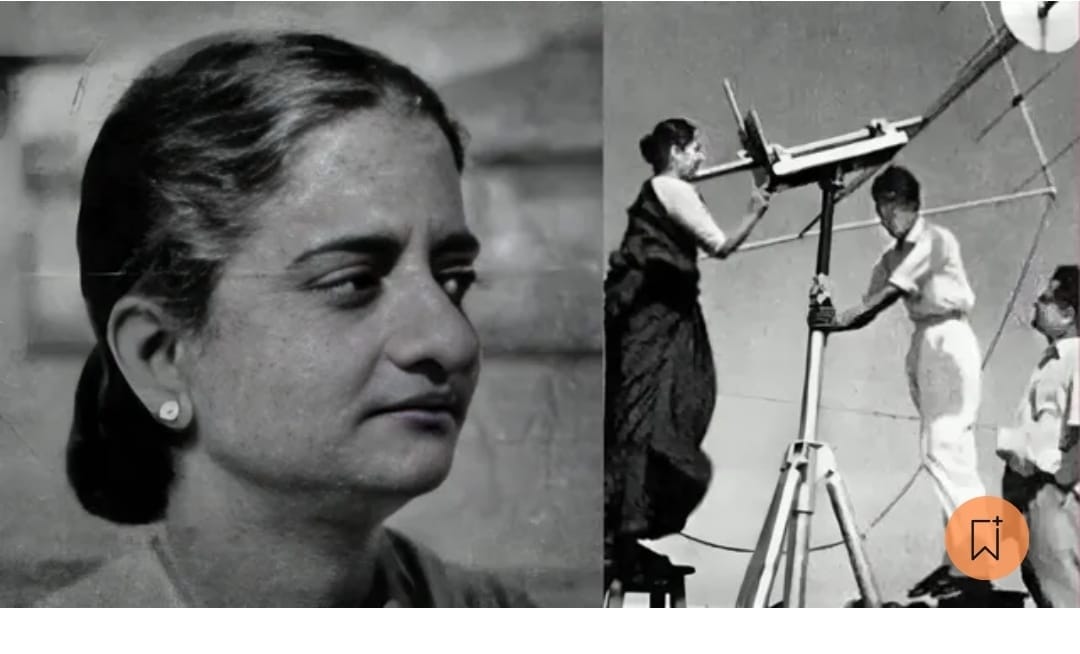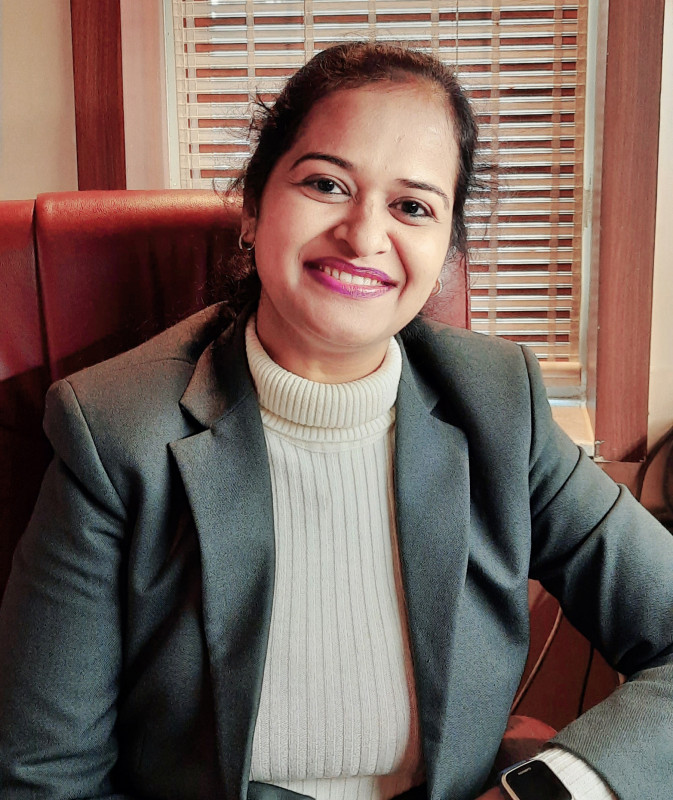
In an era where Instagram validation becomes more essential than inner peace…
Where Gen Z, despite privilege, freedom of choice, education, and access to the world in their palms, still crumbles under life’s temporary tests...
Where news headlines scream of husbands killing wives, mothers poisoning children, and young lovers ending their lives over rejection...
Where one failure, one breakup, one loss, or one job rejection pushes a mind over the edge...
Here stood a woman. In 1930s Madras.
Widowed. At 18. With a child in her arms.
And no one to fight her battles — except her own soul.
Her name was Ayyalasomayajula Lalitha.
And I did not know she would end up becoming my hero.
Where Grief Ends, Grace Begins
The year was 1937.
Lalitha was 18. Widowed. A daughter cradled to her chest.
In that time, a woman in her position would’ve been condemned to a life of white sarees, silent prayers, and unacknowledged suffering.
But she did something rare — she didn’t scream, she didn’t curse fate, she didn’t shut herself from the world.
She chose courage over comfort.
Her father, a professor of electrical engineering, didn’t see her as a burden to be hidden. He saw a mind unbent by despair.
He didn’t just grieve with her — he handed her a pen and walked her to the gates of College of Engineering, Guindy.
No woman had ever studied engineering there before.
And now she sat in classrooms filled with men, dissecting equations, decoding blueprints, and sketching possibilities.
An Engineer by Education. A Revolution by Existence.
1943.
She graduates.
India’s first female electrical engineer.
Not because she wanted to break rules.
But because she didn’t want her life to break her.
She never stood on podiums and shouted slogans.
She stood behind drawing boards.
Designing transmission lines.
She worked on Bhakra Nangal, India’s largest dam project, powering not just grids but dreams.
No reservations.
No media attention.
No hashtags.
Just one woman, quietly performing, consistently rising.
While today we wait for systems to validate us —
Lalitha became the system that would one day empower others.
The Quiet Violence of Privilege
Now let’s come to the present.
I am a psychologist.
I counsel hundreds of youth, professionals, couples — many of them from the most prestigious, protected and privileged backgrounds.
And every week, I hear a new story:
“I failed once, I’m useless.”
“She left me, I don’t want to live anymore.”
“My startup didn’t work, I feel ashamed to face the world.”
“I can’t take this stress anymore — I feel like ending it.”
I do not belittle pain. I do not deny that mental health is real.
But I do question why so many break so easily despite having so much.
Education.
Financial support.
Freedom to choose partners.
Freedom to choose careers.
Therapy.
Friends.
Google.
And still — so much fragility.
When we hand over so much power to emotion and forget to train our minds to hold hope, pain becomes a weapon we turn against ourselves — or others.
A 27-year-old man, with an engineering degree, kills his wife and child because of unpaid loans.
A 22-year-old woman poisons her husband to be with her boyfriend.
A 19-year-old takes her life after failing one paper.
What is happening to us?
We don’t need more Wi-Fi towers.
We need stronger resilience towers inside our homes, schools, and conversations.
And that’s where Lalitha’s story enters not just as inspiration — but as an urgent intervention.
Resilience Is Not Born. It Is Built.
When Lalitha was rejected from site visits because she was a widow, she didn’t quit.
She didn’t post a rant on Twitter.
She worked from her desk — quietly outshining her male peers.
She joined Associated Electrical Industries in Calcutta.
Worked with British engineers, overcame biases, and never let her gender or marital status dictate her worth.
She powered systems that powered a nation.
By 1964, she stood tall at the First International Conference of Women Engineers and Scientists in New York.
A saree-clad Indian woman.
In a room full of Western achievers.
Not seeking sympathy — but offering substance.
By 1966, she became a full member of the Institute of Electrical Engineers, London.
A feat that no other Indian woman had yet achieved.
While many were waiting to be rescued — she became her own rescue.
Why Her Story Matters More Now Than Ever
Not because she was the first woman engineer.
But because she did not allow her pain to define her potential.
She did not write revenge stories.
She wrote circuit diagrams.
She didn’t slap patriarchy in the face.
She rewired it — silently, powerfully, permanently.
And yet, ask any engineering college today — how many even know her name?
We remember loud actors, scandalous headlines, and viral reels.
But forget the true heroes who shaped our power, our bridges, our futures.
We are so addicted to noise that we no longer recognize the strength of silence.
What Should the Youth Learn From Lalitha?
1. Don’t confuse comfort with strength.
Privilege is not the opposite of struggle. It’s a tool. Use it. Don’t waste it.
2. Failure is not fatal.
You are allowed to fall. But you’re not allowed to forget how to rise.
3. There is power in humility.
Lalitha didn’t demand recognition. She focused on work. Let that be your revolution.
4. Blame is easy. Responsibility is power.
She didn’t blame God, her fate, or her in-laws. She built a new fate.
5. Resilience isn’t loud.
It’s quiet. Like her circuits. Like her legacy.
To the Parents Reading This...
Your child doesn’t need more trophies.
They need the strength to lose, the dignity to wait, the courage to try again.
Introduce them to stories like Lalitha’s — not just to inspire, but to immunize.
Immunize them from this epidemic of fragile confidence.
Let them learn that one failure is not their funeral.
That heartbreak is not the end of destiny.
That silence can be strength — and that brilliance often whispers.
To the Students and Professionals Reading This...
You will face storms.
Rejections.
Loneliness.
Loss.
But every time you feel you’re about to collapse, remember the girl in the white saree in 1930s Madras.
Holding a baby.
Staring into an abyss.
And choosing to write history with a pencil, a degree, and relentless discipline.
Let’s Rewrite Our Social Media Heroes
If memes can trend, so can memories.
If influencers can go viral, so can icons.
Let’s post, tag, write, and amplify real legends like A. Lalitha.
Let’s create a world where our children do not just follow trends, but follow character.
Because while one movie can move a generation for a week —
one real story can build a generation for life.
---
With warmth and strength,
Dr. Varsha Thakur
Professor | Author | Psychologist | Life Coach | Entrepreneur
Founder – DVAR Consultancy Pvt Ltd & Vigyan Saroj Care Foundation
Philanthropist | Social Worker | Seeker
---
If this story touched your heart, share it.
Let’s not allow silence to bury strength again.
Let every young woman, every man in crisis, every soul on the edge — read about her and realize:
> “Before we had panels and policies — Lalitha broke the current.”
Not with fists.
But with fire in her mind.
And faith in her future.
✨ Jai Hind to her brilliance.

